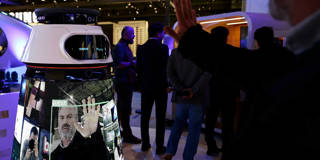As policymakers and regulators around the world grapple with recent developments in artificial intelligence, they should look to the European Union for a basic model of how to balance freedom and safety. The key is to focus not on the technology but on the risks likely to accompany its various uses.
BRUSSELS – In Poznan, 325 kilometers (200 miles) east of Warsaw, a team of tech researchers, engineers, and child caregivers are working on a small revolution. Their joint project, “Insension,” uses facial recognition powered by artificial intelligence to help children with profound intellectual and multiple disabilities interact with others and with their surroundings, becoming more connected with the world. It is a testament to the power of this quickly advancing technology.

BRUSSELS – In Poznan, 325 kilometers (200 miles) east of Warsaw, a team of tech researchers, engineers, and child caregivers are working on a small revolution. Their joint project, “Insension,” uses facial recognition powered by artificial intelligence to help children with profound intellectual and multiple disabilities interact with others and with their surroundings, becoming more connected with the world. It is a testament to the power of this quickly advancing technology.